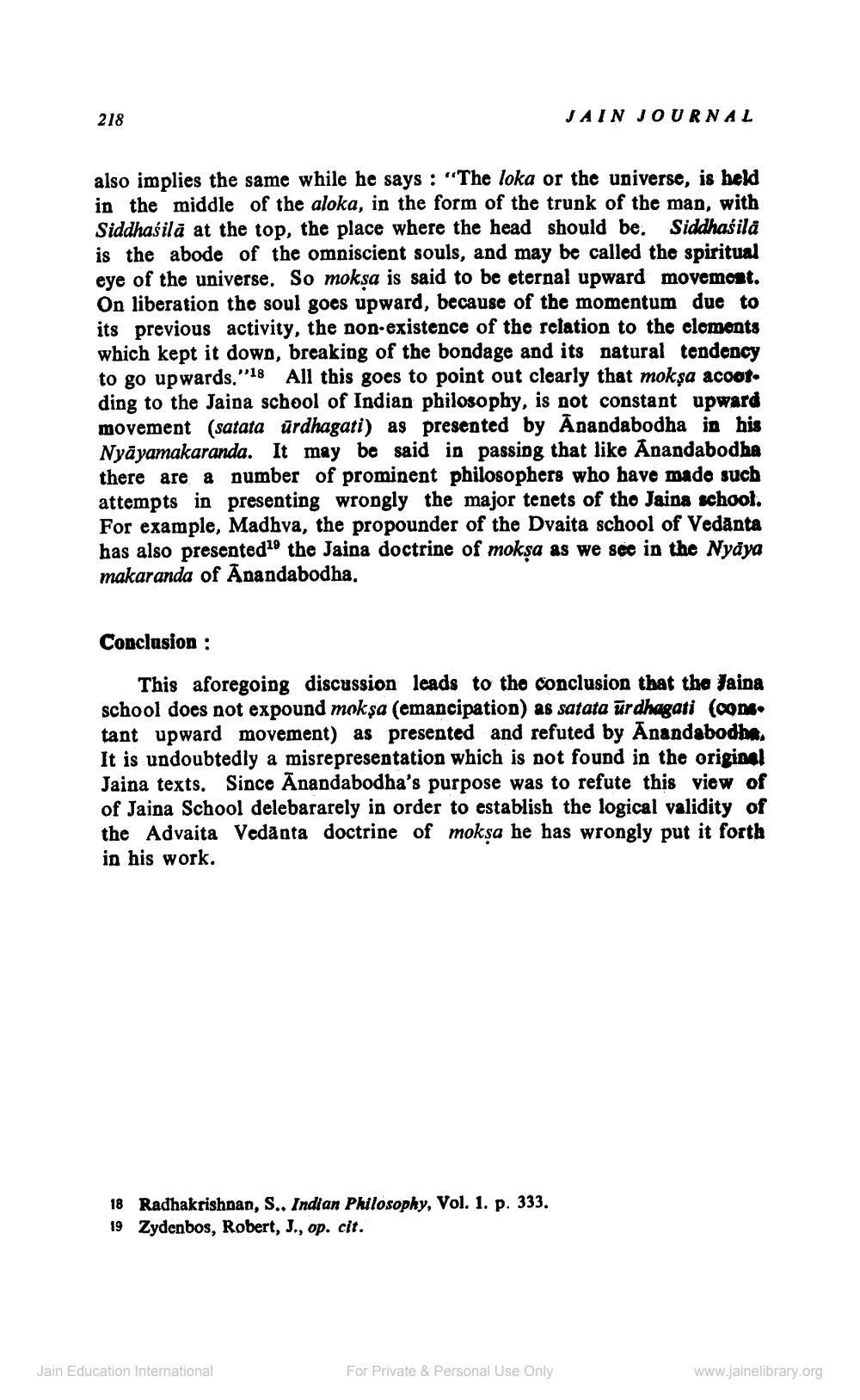________________
218
JAIN JOURNAL
also implies the same while he says : "The loka or the universe, is held in the middle of the aloka, in the form of the trunk of the man, with Siddhasilà at the top, the place where the head should be, Siddhasila is the abode of the omniscient souls, and may be called the spiritual eye of the universe. So moksa is said to be eternal upward movement. On liberation the soul goes upward, because of the momentum due to its previous activity, the non-existence of the relation to the clements which kept it down, breaking of the bondage and its natural tendency to go upwards."18 All this goes to point out clearly that moksa acoot. ding to the Jaina school of Indian philosophy, is not constant upward movement (satata ürdhagati) as presented by Anandabodha in his Nyāyamakaranda. It may be said in passing that like Anandabodha there are a number of prominent philosophers who have made such attempts in presenting wrongly the major tenets of tho Jaina school. For example, Madhya, the propounder of the Dvaita school of Vedanta has also presented1o the Jaina doctrine of moksa as we see in the Nyaya makaranda of Anandabodha.
Conclusion :
This aforegoing discussion leads to the conclusion that the Jaina school does not expound moksa (emancipation) as satata ürdhagati (cong. tant upward movement) as presented and refuted by Anandabodha, It is undoubtedly a misrepresentation which is not found in the original Jaina texts. Since Ānandabodha's purpose was to refute this view of of Jaina School delebararely in order to establish the logical validity of the Advaita Vedānta doctrine of moksa he has wrongly put it forth in his work.
18 Radhakrishnan, S.. Indian Philosophy, Vol. 1. p. 333. 19 Zydenbos, Robert, J., op. cit.
Jain Education International
For Private & Personal Use Only
www.jainelibrary.org




